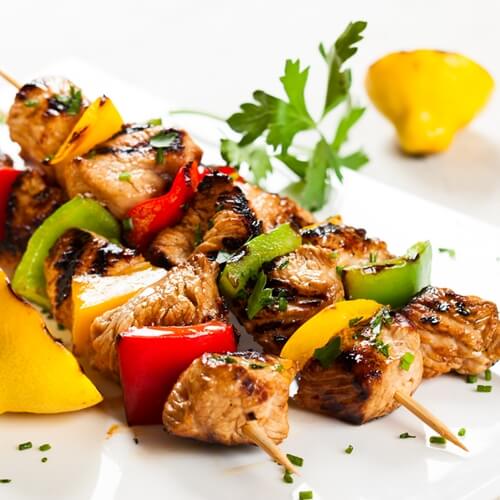3 Tips For Making Delectable Kebabs
When people think of cookouts, their thoughts inevitably turn to hamburgers, hot dogs, steak and chicken. Yet, not enough emphasis is placed on kebabs. They may feature the same cuts of meat, but everything from the marinade to the skewers can make for a much different culinary experience. However, it’s not a good idea to just start skewering meat with wood and lighting fires. There’s a certain art to making kebabs, so please consider the following:
Soaking the skewers
As The Kitchn pointed out, there’s a lot of discussion going on regarding whether or not you should soak skewers in water prior to cooking. Some recipes claim that soaking will reduce the risk of burnt skewers. Meanwhile, other chefs say the process is pointless as some damage is inevitable. So, what’s the actual verdict? It seems that it matters less about the soaking and more about the quality of the wood. Thin or flimsy skewers are more likely to catch fire because there’s very little support in the first place. As such, it might be a good idea to use skewers that are thick and sturdy, because they can handle more heat before they begin cracking, splintering, etc. Better yet, rely on longer lasting metal skewers – just be careful when picking those up off the grill.
If you opt for wooden skewers, always use two per kebab. This will help support the weight of the ingredients.
The meat matters
Before preparing kebabs, each chef must ask a very important question – What kind of meat should I use? While any kind will do, The Meatwave noted that there are certain characteristics all cuts should have in common. For one, try to only use cubed meat, as it will cook more evenly throughout. Everything should also be lean, which not only is easier to eat off a skewer, but also absorbs the marinate more effectively. More specifically, the best kebabs will include at least one of the following:
- Beef: Sirloin is king, thanks to its low fat content.
- Chicken: Skinless is preferred to boneless, as it better absorbs the marinate.
- Lamb: Go for the shank, which has little in the way of fat.
- Shrimp: Always ensure that the shrimp has thawed out fully.
- Pork: Tenderloin is tailor-made for cubing and requires little trimming.
Each cube should be about 1 inch in height.
Don’t skimp on the marinade
In many ways, a good marinade can make or break a kebab. Epicurious.com collected one recipe that can be used for all your marinating purposes. It’s a combination of olive oil, garlic and lemon juice that’s perfect for meat, poultry and seafood. For some added kick, toss in cayenne or chili pepper. Marinating is all about the timing, Serious Eats claimed. To begin, make sure everything has had plenty of time to soak – there’s no definitive rule, but the longer, the better. Additionally, you’ll want to make sure you’ve made more than enough marinade, as you can use the rest to baste the meat during the roasting process. While marinating isn’t a requirement, it has its purposes beyond added flavor. Marinating often helps to improve the timing and how well things are cooked.
Explore the tasty art of kebabs when you enroll in online cooking school.


